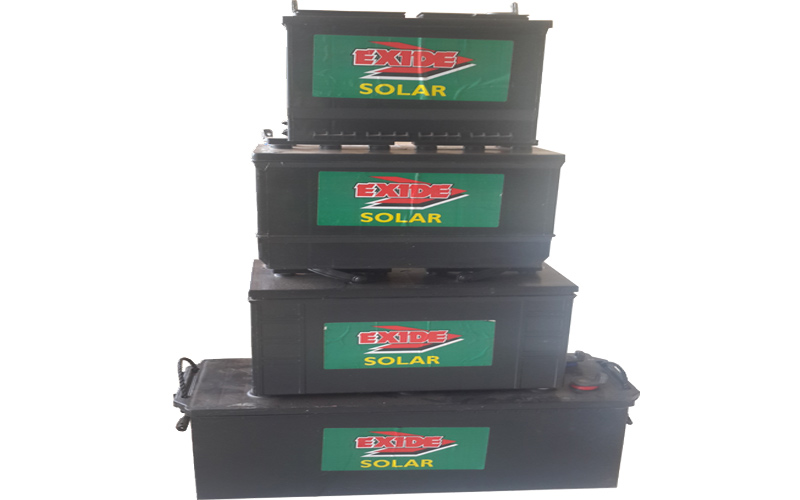Last week we started looking at one of the major components of your solar power system, the battery.
In summary last week we looked at the types of battery’s available, how they are sized, capacities and their life span.
As we continue the discussion around the solar battery this week, we have been asked to take a closer look at the battery types. After we have done that, we will take what we learnt last week and size a battery for a 12 volt solar power system.
As we suggest last week modern lead-acid batteries come in flooded (FLA), gelled (GEL) and absorbed glass mat (AGM). Let’s take a closer look at what this actually means.
The flooded deep cycling battery is the oldest and most common type of battery available used in the industry. This battery is defined as a maintained, wet-cell or flooded battery. The battery’s internal plates are covered by a liquid called electrolyte that is a mixture of battery acid and battery water. Depending on how hard the battery works, the battery water will need to be replenished every couple of months.
The vapour process that sees the battery losing water, means that the batteries must in most cases, be installed in a very well-ventilated area. Although this battery requires a fair amount of attention, when looked after it has potentially long lifespans of use up to 12 years have been recorded. It does however suffer from chemical failures related to liquid conditions such as sulphating which gradually reduces the battery life span when it is not looked after properly.
The GEL battery falls into the family of “Sealed Maintenance Free” (SMF) group of batteries. The gelled battery’s construction is similar to the flooded battery with the major difference being that the electrolyte is in the form of a gel. The battery does not require any topping up of fluid. The battery is able to hold a charge better than a flooded battery as well as deeper discharges when they happen. Because the battery’s electrolyte is a gel it does not have to be kept or installed upright, and suffers less sulphating issues giving it longer life spans for the same discharge rates, with the added bonus of being virtually maintenance free.
Also maintenance free, the absorbed glass mat (AGM) is based on the same principals as other lead acid batteries. The battery’s plates have a very fine fibreglass mat placed between them. The mat is impregnated with the electrolyte making the battery spill proof, usually lighter than both the FLA and GEL types, the battery is the most efficient of all the three types. Like the GEL battery the AGM battery can be charged at a greater rate, and because the electrolyte is in a mat, they are considered less hazardous than the flooded type of battery. The AGM battery is also cheaper than the GEL battery but more expensive than the flooded type.
I hope we have answered the question about battery types in as simple but understandable fashion as possible. In future we will look at selecting the right type for the right application. Let us look at sizing a battery for a 12 volt system.
Sizing your battery bank
Now assuming that all the batteries above are the same and taking the consumption calculation we looked at when we discussed Energy Management. The total energy required was 330watt hours of power.
We want our battery to last for a long time, so we shall assume a maximum depth of discharge of 20%. Now let’s do some calculations. If 330watt hours are 20% depth of discharge what size is the total capacity (X) of the battery?
X = 330/20% making X 1650watt hours.
The battery size will be watt hours / battery bank voltage (system voltage) = Amp Hours.
Battery total size will be 1650 whrs / 12 volts = 137.5Ah.
Rounding up to the next commercially available size, our selection would be the 150Ah battery to operate at 20% depth of discharge.
The total consumed power on a daily basis will be a maximum 30Ah. This is what the solar panel will need to replace on a daily basis. Getting interesting right?
Next week we will take a last look at the battery and then combine what we have so far, the SOLAR PANEL, CHARGE CONTROLLER and BATTERY and size a basic 12 volt DC power system.
Have a great week ahead and keep those pencils sharp and please continue to send your questions to us at tech@clamorepower.com. The more you communicate with us the better placed we will be to offer clearer and simpler answers that will help you. You can also visit our FAQ page for more information.

3 comments
Keenly following these articles. highly informative I tell you.
Thank you Frank.
Hello boss I’m working under solar system company in Dubai. I also need some information about solar batteries,solar panel and solar charge controller.